Nokia, a name most people would remember from the old Nokia heyday when it comes to phones and certainly one I hold dear to my heart having owned a number of earlier Nokia phones – heck I even still have my old Nokia N85 and N95!!
Given Nokia phones are made under a licensing contract with HMD Global, they have been a phone company we here at the Ausdroid office still care about and the guarantees of upgrades, both security and firmware for at least a minimum 2 years have ensured the brand is a firm favourite.
So when the company announced its latest 5G mid-range device, the Nokia G50 5G, it was a device I wanted to try and see what is offered for the price tag of $449. I wanted to see if this device can certainly handle the daily barrage I tend to subject my phone to, so let’s see how the Nokia G50 5G went shall we.
What’s in the box
There are no bells and whistles here, you get the basics including a 10w charger, 1.5m USB-A to USB-C cord, usual paperwork and earbuds.
Design and under the hood
The Nokia G50 5G comes with a 6.82-inch teardrop display (720 x 1560) at the front. Within the teardrop display, you’ll find an 8MP front facing camera. Perhaps, unfortunately, the display is capped at 720p and 60Hz refresh (great for battery life) and you can definitely see this when it comes to graphics intensive gaming, with such gaming showing up pixels and rough edges on objects such as asphalt 9 or even Pokémon Unite when playing.
The rear of the Nokia G50 5G is made of a polymer plastic housing that wraps around to the sides, top and bottom of the phone. The rear top middle of the triple rear camera is housed within a 1-2mm raised housing which contains a 48MP main wide camera, 5MP ultrawide camera lens and a 2MP depth sensor lens along with a single LED flashlight.
The right side of the Nokia G50 5G contains the volume rocker with the combined standby/power and a fingerprint sensor located just below it. The fingerprint sensor is a little touchy at best and my preference is for a fingerprint sensor under the display — although Google hasn’t nailed that this year — or a rear fingerprint sensor.
The bottom of the Nokia G50 5G houses the rear speakers which aren’t too bad but worth considering using some Bluetooth earbuds or headphones to watch movies, videos or listen to music in general. Next to this in the middle is the USB-C charging port and to the left, the microphone.
The left of the device houses a dedicated Google Assistant button which whilst this is contentious, I have to say I like the inclusion of this button so you don’t need to use the usual trigger of ‘Hey Google’ which can trigger any Google Assistant devices around you.
The top of the Nokia G50 5G has a 3.5mm audio jack with another microphone located to the left of the jack, to assist with reducing background noise located just to the left of the audio jack port. The Nokia G50 5G certainly is a chunky monkey, as it comes in at 8.85 mm (Height) x 173.83 mm (Length) x 77.68 mm (Width), with the G50 5G weighing at 220 grams. It’s a device that is quite usable with one hand, there were times where two will be needed.
Internally, the Nokia G50 5G is powered by a Qualcomm Snapdragon 480 chipset processor and is also powered by 4GB of RAM with 128GB of onboard storage which can be expanded by 512GB via MicroSD card. Not exactly bleeding edge stuff, but it will meet the needs of a large number of users.
Lights, Camera, Action
The Nokia G50 5G comes with a triple rear camera set up that is made up of a 48MP main wide camera, 5MP ultrawide camera lens and a 2MP depth sensor lens.
In terms of features, built into the camera software are Photo, Portrait, Video, Night, Time-Lapse, Dual-Sight, Panorama, Slow Motion and Pro. Pictures taken with the triple rear camera set up seem to be quite good, although the ultra-wide camera tends to make colours in the photo less vivid and in some cases darker than they would seem in real life.
An example is this with the beach photos I took with the rear cameras where it seemed the sand was not as “vibrant and yellow” as what it actually was to my eyes. Interestingly, the ocean also seemed deeper and richer in colour on the photo than in reality. Even zooming in to the pictures afterwards, the quality is lost via the vibrancy of colours, darker tones and in some cases, some additional noise or compensation of the AI software or lens did have a slightly detrimental effect on the photos taken.
The night photos under the night mode allow more light in where available, there is still quite a bit of grain, shadows and noise. Even more so if not using night mode pictures are darker, more grain, noise and darker shadows. Photos taken in low light show a lot of grain and seem a bit blurry despite either standing still. This loss of clarity combined with the grainy texture and loss of clarity certainly does, for me at least, make the overall camera experience a bit disheartening.
The front camera is an 8MP camera lens and I have to say the selfie pics I took just don’t seem sharp, in fact, the skin tones seem smudged. This gives the pictures a blurry look and this is despite using the HD feature and making sure I had decent lighting. I am not sure if this could be fixed through a software upgrade, or if it’s more the hardware than a software issue.
Performance, Software, Connectivity
The Nokia G50 5G is powered by a Qualcomm Snapdragon 480 chipset processor which — not being particularly grunty — can be a little laggy, especially with multitasking or gaming. I also noted that the front display response was a bit delayed and I am unsure if this is down to a possible combination of the chipset underpowered for the device.
This was noticed when trying to play games or even write texts or just scroll websites or social media, there was a bit of a delay or disconnect from the screen and software responding. The Nokia G50 5G runs Android 11 right out of the box and as usual, comes with HMD Globals guarantee for 3 years worth of firmware and security updates which have made Nokia a firm favourite here in the Ausdroid office.
The pre-installed apps other than the pre-installed Google apps, are those from Nokia directly via its My Device app. This allows you to:
- Monitor your device status and health
- Contact support should you need
- Recommends apps to you
There is also the ability to connect to the HMD Globals Connect brand and order e-sims or sim kits. You can check out more about HMD Connect here. Within the HMD connect, there is an ExpressVPN app which you can opt to run a free 30 day trial, but thereafter, subscription costs start at $12.99 per month. You can find out more about ExpressVPN here.
Pre-installed is the Amazon shopping app alongside Spotify, useful if you’re a user but for many nothing more than unusable space.
When it comes to connectivity, the Nokia G50 5G runs Wi-Fi 802.11 a/b/g/n/ac/6, dual-band, hotspot, Bluetooth version 5.0 and NFC capabilities. If your plan and carrier have capacity, you’ve also got 5G mobile connectivity available.
Battery
The Nokia G50 5G comes with a non-removable 5,000mAh battery which gave me around 1.5 to 2 days worth of battery power with moderate usage. Even on a high usage day, I was getting a day’s worth of power.
Interestingly, HMD Global has only included a 10W charger, although the Nokia G50 5G can support 18W charging. I understand the reason for this — selling you the 18W charger at extra cost — it seems strange that HMD has gone down this road for what is, in essence, a mid-range device.
Should you consider buying one?
I have to be honest here and say, whilst I would like to fully recommend the Nokia G50 5G, I just feel that there could, or should have been better than it is. With a few minor changes to the device, it would be easier to recommend. Yes it has a bigger screen, but it is capped at 60Hz refresh. Its battery life is great but this is partly due to the the processor and chipsets being relatively low power which makes the experience feel a bit underwhelming.
The same can also be said for the cameras as on paper they seem like a potential winner, but the experience and photo taken with the Nokia G50 5G just feel underwhelming. Yes granted there is the inclusion of 2-3 years worth of security and firmware updates which I think are amazing and should be adopted by all Android OEM’s, it is not enough to try and cross the device over the additional lines here.
If you’re happy with a device that will support moderate usage and want access to 5G on a budget, the Nokia G50 5G could be the device your after. If you’re after more bang, better camera software and processing power then might be best looking elsewhere.
The Nokia G50 5G is available from the Nokia website, JB Hi-Fi, Officeworks, Harvey Norman and Amazon for $449.



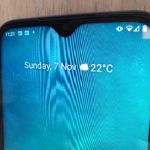
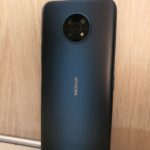
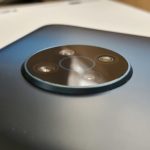

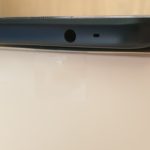
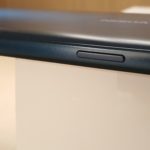
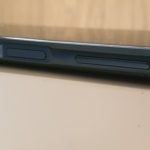
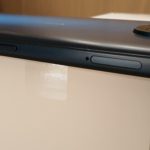










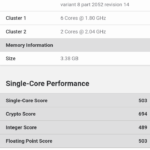
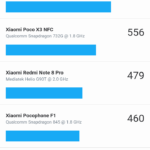

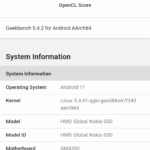
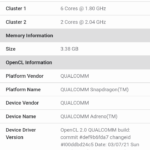
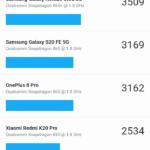
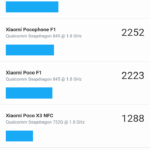

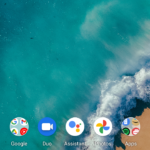
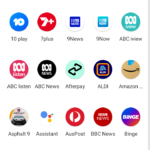


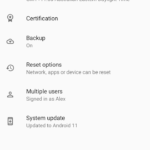
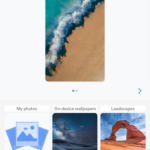
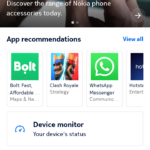
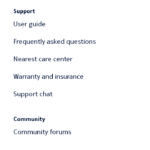

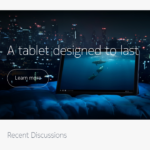
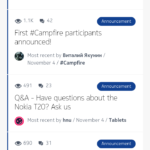



(720 x 1560) display. I stopped reading at that point.
720p might have been acceptable, in 2018/2019 designs, for the entry level market.
Now in late 2021, on a device priced for the mid tier market, 720p is quite bluntly nowhere near up to standard. 1080p at minimum.
Alex, based on your review of the Nokia G50, I’d have very grudgingly given this Nokia 3 stars instead of 4. Back in early 2019, the Nokia 6.1 was still retailing for $399 AUD. 5.5in 1080 x 1920. With this G50 it’s $50 more for a larger physical screen at 720p. Needing to carry a device with a better camera, for taking photos, and another device with a decent screen and processor and response, just to overcome how the G50 falls short, it makes the G50 seem an expensive waste of money. It’s good as a 5G phone, but as… Read more »